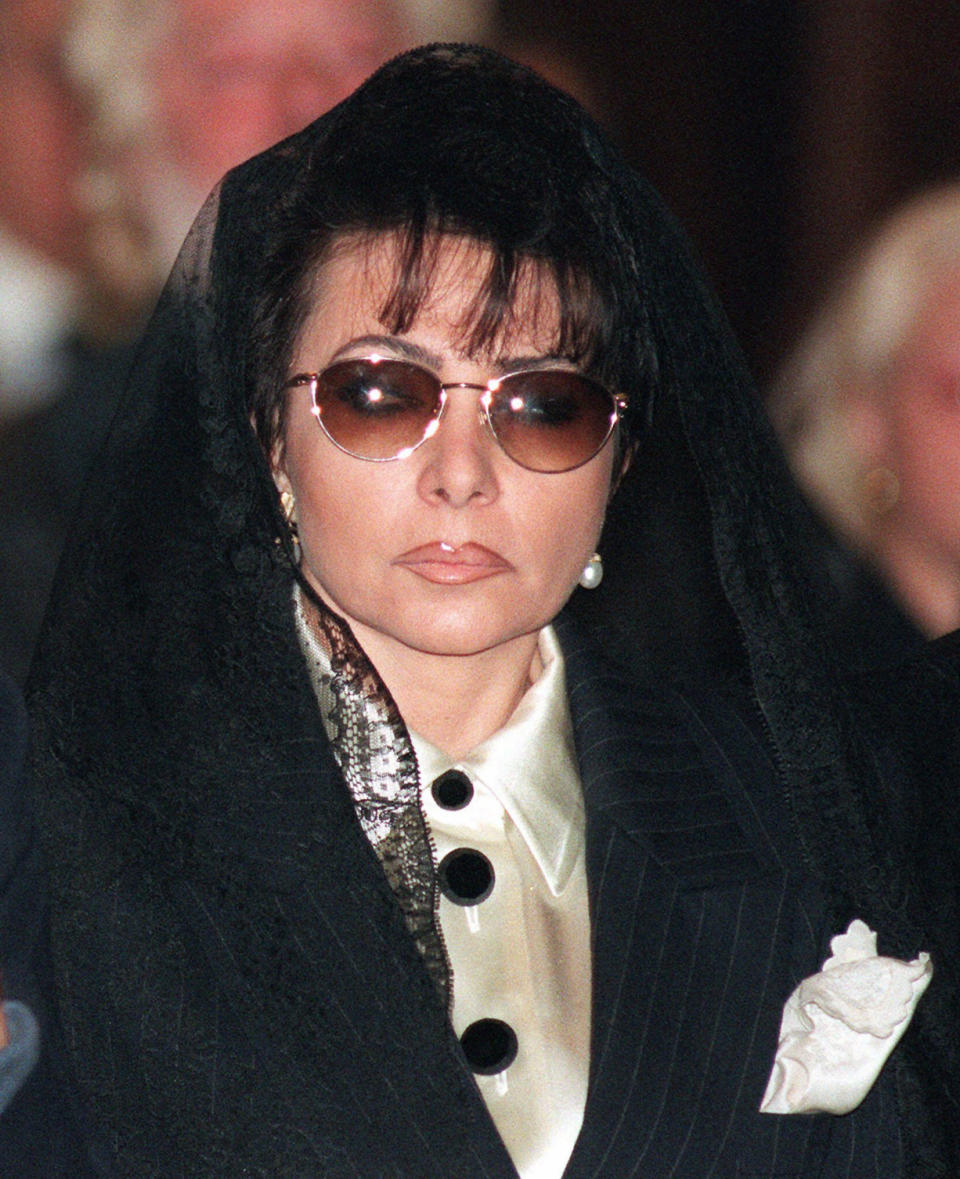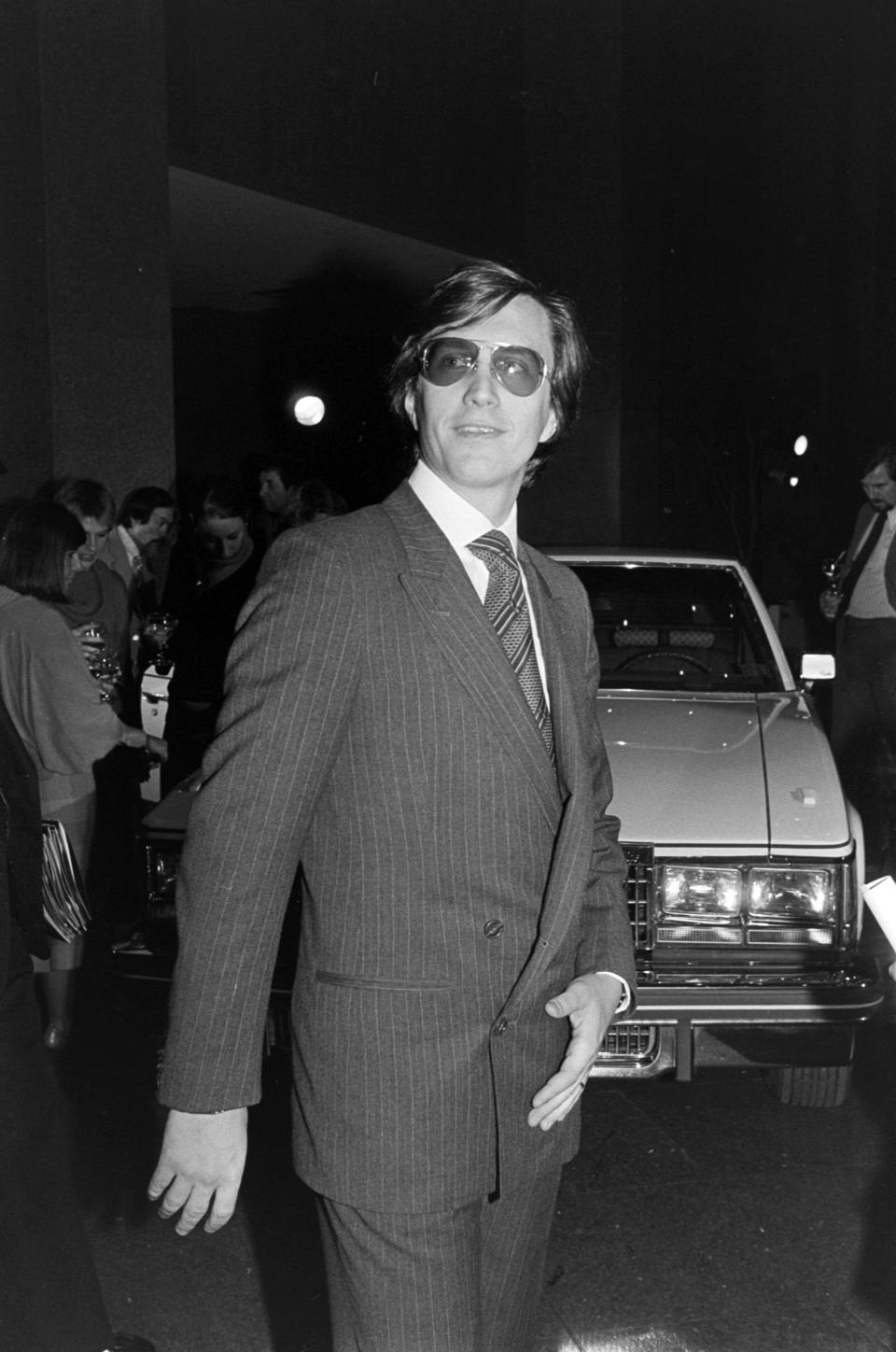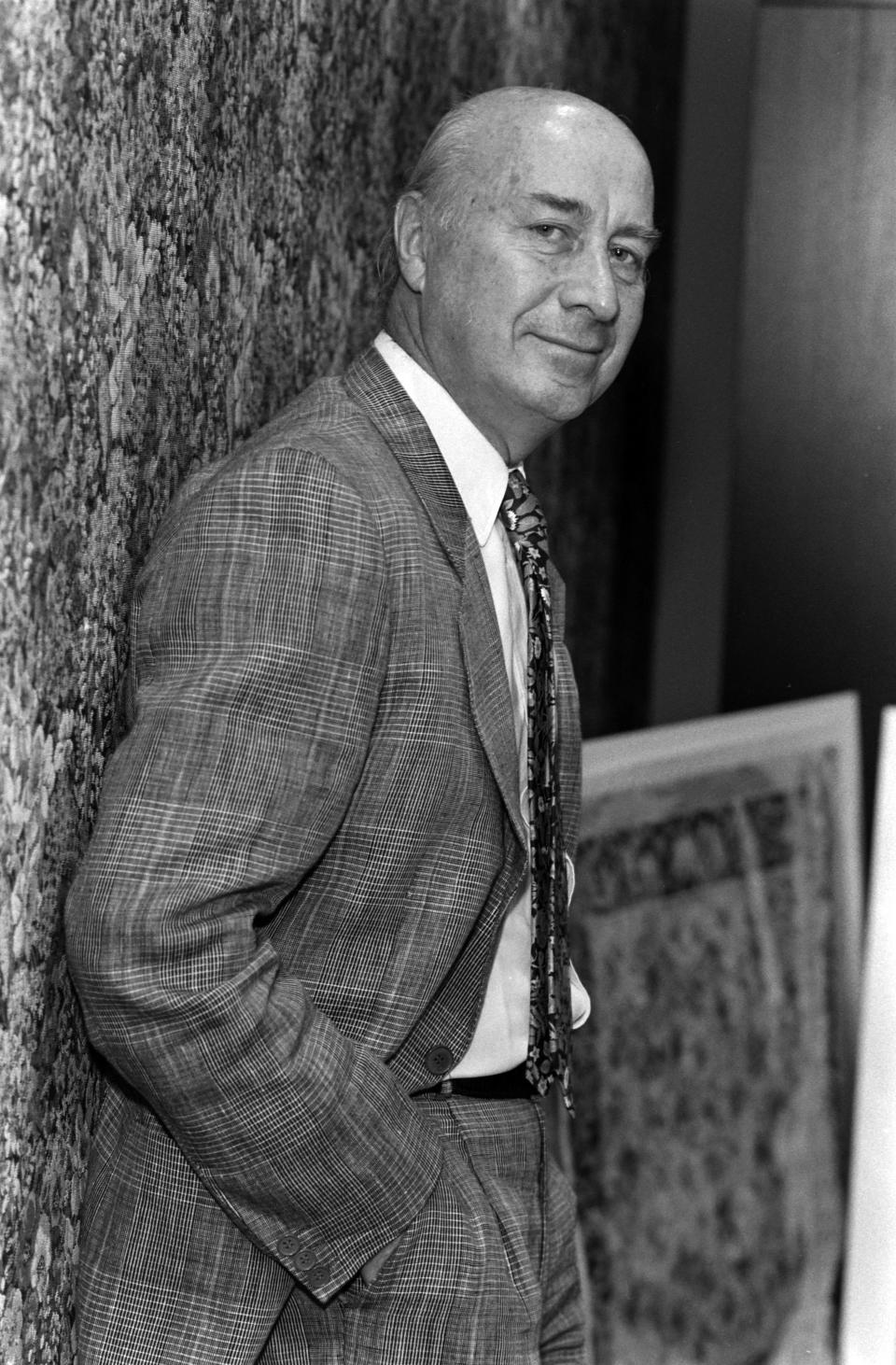Who Are the Characters in the ‘House of Gucci’ Movie?

The buzz around the “House of Gucci” film has been steadily growing since the project was announced in November 2019, and now as the film is set to debut this fall, interest in the Gucci family is growing among moviegoers and fashion fanatics.
Ridley Scott’s film offers a dramatized version of the real-life events surrounding the murder of Maurizio Gucci, who was the head of the Gucci fashion house in the ’90s and was the grandson of founder Guccio Gucci. Gucci’s death was orchestrated by his ex-wife, Patrizia Reggiani, who hired a hit man to kill her ex-husband outside of the Milan Gucci offices.
More from WWD
As the film’s posters and trailer were released in late July, there is newfound interest in the film’s real-life characters that are portrayed by the star-studded cast of Lady Gaga, Adam Driver, Al Pacino, Jared Leto and Jeremy Irons. Here, WWD takes a closer look at each character’s story ahead of the film’s debut. Read on for more.
Patrizia Reggiani
Played by Lady Gaga

AP
Patrizia Reggiani came from a humble background before her mother married transportation magnate Fernando Reggiani, which catapulted Reggiani into a life of being a socialite. Reggiani married Maurizio Gucci in 1972 and the couple had two daughters, Alessandra and Allegra. They became a notable and globally influential couple, splitting their time between Milan and New York, where they had an apartment in the Olympic Tower.
Rodolfo Gucci, Maurizio Gucci’s father, didn’t approve of his son’s marriage and feared that Reggiani was only after the family’s money. He tried to block the wedding from happening by going to the archbishop of Milan, but wasn’t successful. None of the Gucci family attended the ceremony. The couple’s marriage ultimately ended in 1984.
Reggiani was known for being money-hungry and always dressed to the nines in designer wares and opulent jewelry. Her obsession with money seemed to only grow following her divorce. According to WWD’s archival coverage of Maurizio Gucci’s murder, she told an Italian television show that she could hardly survive off the $3 million a year she was receiving from her ex-husband in child support payments.
It was reported that leading up to Maurizio Gucci’s death, he was close to marrying his longtime partner, Paola Franchi, which made Reggiani worry that she was going to lose access to his multimillion-dollar estate. Maurizio Gucci was ultimately murdered before remarrying.
Two years after the murder, Italian police arrested Reggiani for paying $375,000 to a hit man to kill her ex-husband. According to WWD’s archives, she was arrested at her luxurious Corso Venezia apartment wearing an ankle-length mink coat. She later changed into a subdued rain jacket her mother brought her that was “more suitable for prison.”
Four others were also arrested in the crime: Giuseppina Auriemma, a Neapolitan psychic and confidante to Reggiani; Auriemma’s boyfriend Ivano Savioni, a porter at a Milan hotel; Orazio Cicala, the alleged mastermind behind the killing and the getaway driver, and Benedetto Ceraulo, who was the hit man.
Reggiani was known for her witty remarks and indifference toward her ex-husband’s death. At his funeral, Reggiani told journalists, “At a human level, I’m sorry. I can’t say the same on a personal level.”
In 1998, Reggiani was found guilty and sentenced to 29 years in prison. She was later freed in 2016 after serving 16 years of the sentence. She now lives in Milan and works at a costume jewelry firm as a design consultant.
Maurizio Gucci
Played by Adam Driver

WWD
Maurizio Gucci, the son of Rodolfo Gucci and grandson of design house founder Guccio Gucci, was the last of the Gucci family to run the business. He joined his uncle, Aldo Gucci, in New York in 1972 as his uncle was pioneering the brand’s presence in the U.S. market through its store at the Savoy Plaza Hotel.
It was during Maurizio Gucci’s time in New York that the brand hit its stride in the U.S. With his uncle, they grew the Gucci brand into other apparel categories and ran two successful storefronts on Fifth Avenue that offered clothing, shoes, bags, luggage and accessories.
Maurizio Gucci became chairman of the family business in 1983 following his uncle Aldo Gucci’s ousting due to his tax-evasion charges and his father Rodolfo Gucci’s death. During his tenure, he helped spearhead the brand’s relaunch as it had started losing its luster due to its association with cheaper goods. He was instrumental in turning the Gucci brand into the luxury giant it is today.
In 1989, he teamed with Bahrain-based investment and asset management company Investcorp to help with Gucci’s revitalization. The company purchased 50 percent of Gucci’s shares. This marked one of the first private equity deals in the fashion industry and set the precedent for other design houses going forward.
According to Andrea Morante, chairman of independent asset management company QuattroR — who introduced Maurizio Gucci to Investcorp — Maurizio Gucci realized his family was “too litigious and too unprepared to keep the brand alive,” which is why he turned to private equity.
Through the deal, the company began its relaunch. This involved exiting duty-free shops around the world, which meant eliminating a portion of its revenue. The company also focused on removing counterfeits and cheap quality products so that Gucci could reposition as a luxury brand.
The relaunch also involved changing up its design direction and management. Maurizio Gucci looked to Dawn Mello, then president of Bergdorf Goodman, to help revitalize the brand. With her help, Gucci brought on Richard Lambertson, who was the head of Bergdorf Goodman’s accessories department, as the design house’s new design director. Fashion designer Tom Ford was also brought on to oversee women’s ready-to-wear.
Gucci’s restructuring plan hit a roadblock in the early ’90s as it faced a difficult retail market and a customer base that was still adjusting to the design house’s new luxury positioning. This led to conflicts between Maurizio Gucci and Investcorp, which later resulted in the investment company acquiring all of Maurizio Gucci’s shares. This ended Maurizio Gucci’s involvement in the firm.
After leaving the family business, Maurizio Gucci largely stayed out of the public eye. It was reported he was looking into new businesses unrelated to fashion to invest in and spent time on his beloved yacht.
Maurizio Gucci died in 1995 at the age of 46 after being shot outside his Milan office. It was later discovered that his ex-wife, Patrizia Reggiani, hired a hitman to kill her ex-husband.
Aldo Gucci
Played by Al Pacino

WWD
Aldo Gucci was the oldest son of Guccio Gucci, who started the Gucci brand in 1921 as a saddle and leather business.
He joined the family business when he was 20 years old and was responsible for spearheading the company’s presence in the U.S. after taking on the role of chairman following his father’s death in 1953.
Aldo Gucci opened the design house’s first store in New York that year and later expanded to locations in Beverly Hills, Chicago and Florida. He also helped grow the business into other categories within apparel.
Aldo Gucci’s nephew, Maurizio Gucci — who worked closely with his uncle in the U.S. market — described him as “a man of great vision,” following his death in 1990.
During Aldo Gucci’s tenure as chairman, he was involved in several public family feuds over the company. In 1981, his son Paolo Gucci filed a lawsuit seeking the right to use his own name on products competing with the existing family business. The Gucci brand sued Paolo Gucci for trademark infringement, which he countersued. Paolo Gucci later was granted court permission for restricted use of his name to create his own designs in 1988.
Aldo Gucci was also in embroiled in another public scandal in 1985 when the Gucci company sued him on charges of siphoning off millions of dollars. He was ousted from his role and his brother, Rodolfo Gucci, became chairman.
Meanwhile, Aldo Gucci and his two sons, Roberto and Giorgio Gucci, were suing Maurizio Gucci — who at this point had taken over as chairman following his father Rodolfo Gucci’s death — because they alleged he obtained control of the company by forging his father’s signature on his will. In 1989, a Milan appeals court cleared Maurizio Gucci of fraud charges regarding the lawsuit.
In 1986, Aldo Gucci pleaded guilty to tax-evasion charges in the U.S. and paid more than $7 million to the government. He also admitted to diverting profits from the company in the U.S. to dummy companies abroad and was sentenced to one year in prison for his crime. Paolo Gucci was instrumental in the conviction, as he turned in information that implicated his father.
He ultimately served five-and-a-half months in prison in Florida for the crime and finished his sentence at a hallway house in West Palm Beach, Fla.
Aldo Gucci died in 1990 at the age of 84 after suffering from complications from the flu. He was also battling prostate cancer.
Rodolfo Gucci
Played by Jeremy Irons

ASSOCIATED PRESS
Rodolfo Gucci was another son of design house founder Guccio Gucci. While he was involved with the family business, he was better known for his stage career.
Under the name of Maurizio D’Ancora, Gucci starred in many films and plays between 1929 and 1946. He started his acting career at the age of 17 when Danish director Alfred Lind gave him a supporting role in the 1929 film, “Ragazze Non Scherzate.”
He later gave up his acting career to join his family in running the Gucci business in 1953 following his father’s death. With his brother Aldo Gucci, the Gucci brothers split the business evenly among themselves. Rodolfo Gucci served as the company’s vice chairman, while Aldo Gucci was chairman.
When Aldo Gucci was ousted from the company following his tax evasion charges and allegations of siphoning money from the company, Rodolfo Gucci was named chairman in 1982.
Rodolfo Gucci’s tenure only lasted a year, as he died from an apparent heart attack in 1983 at the age of 71. His son Maurizio Gucci was then named chairman.
Paolo Gucci
Played by Jared Leto

WWD
Paolo Gucci, the son of Aldo Gucci, had a tumultuous history in the family business. His role was smaller than that of his father, uncle and cousin, but Paolo Gucci was instrumental in the Gucci company’s success in the late ’50s and early ’60s when he was chief designer.
In the family’s fight to control the company, Paolo Gucci was fired from the business twice, once by his father and the second by his uncle Rodolfo Gucci.
Paolo Gucci spent $5 million suing his family business for breach of contract, infliction of emotional distress and assault and battery. He also sued his family for the right to use his own name to set up a competing leather goods company. Paolo Gucci was granted the right to use his name, but his plans to create a brand didn’t come to fruition. He later sold his final shares in the Gucci company in 1987, despite not having been involved in the business since 1980.
Paolo Gucci also played a role in his father’s tax-evasion case, as he turned in information that implicated his father and led to his conviction.
Aside from his family squabbles, Paolo Gucci was embroiled in other financial issues in his life. His ex-wife, Jenny Garwood, had sued him for allegedly failing to pay $505,600 in child support and he had a warrant out for his arrest for his questionable bankruptcy filing.
Paolo Gucci died in 1995 a few months after the death of his cousin, Maurizio Gucci. Paolo Gucci died at the age of 64 from heart and kidney failure.
READ MORE HERE:
A Breakdown of Lady Gaga and Adam Driver’s Fashion in ‘House of Gucci’
The House of Gucci: A Complete History and Timeline
Lady Gaga Shares First Look at ‘House of Gucci’ Film
Best of WWD
Sign up for WWD's Newsletter. For the latest news, follow us on Twitter, Facebook, and Instagram.


